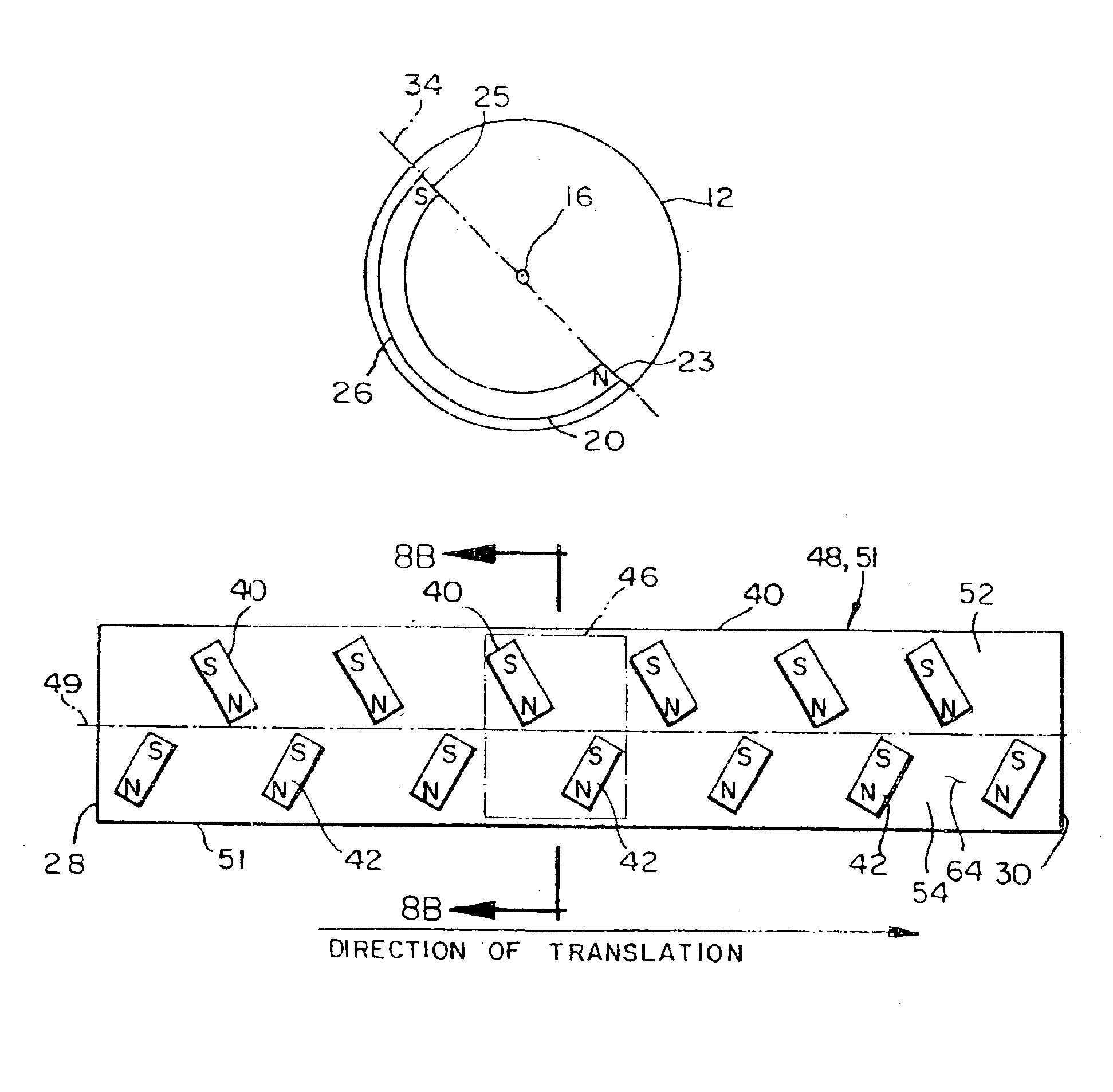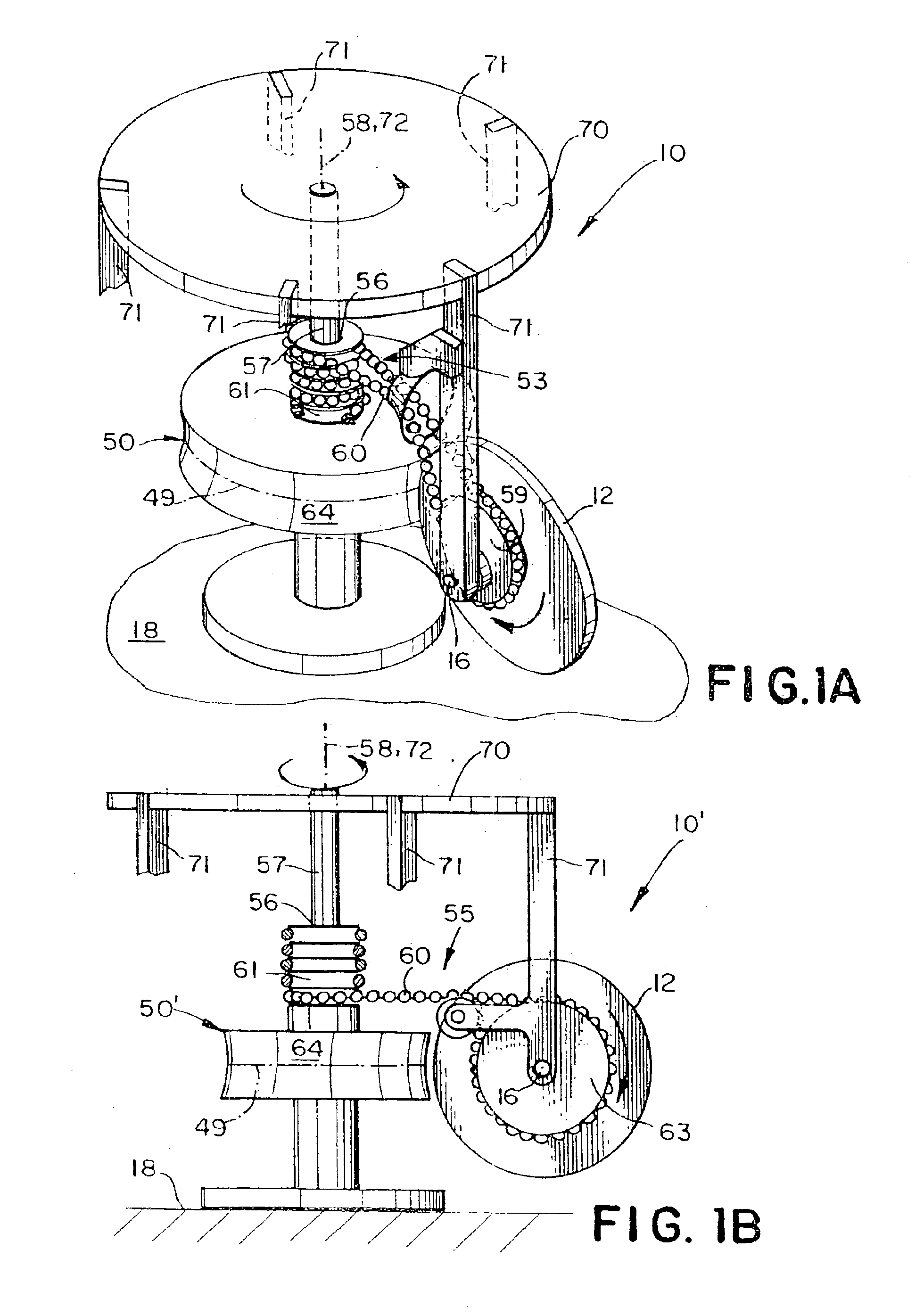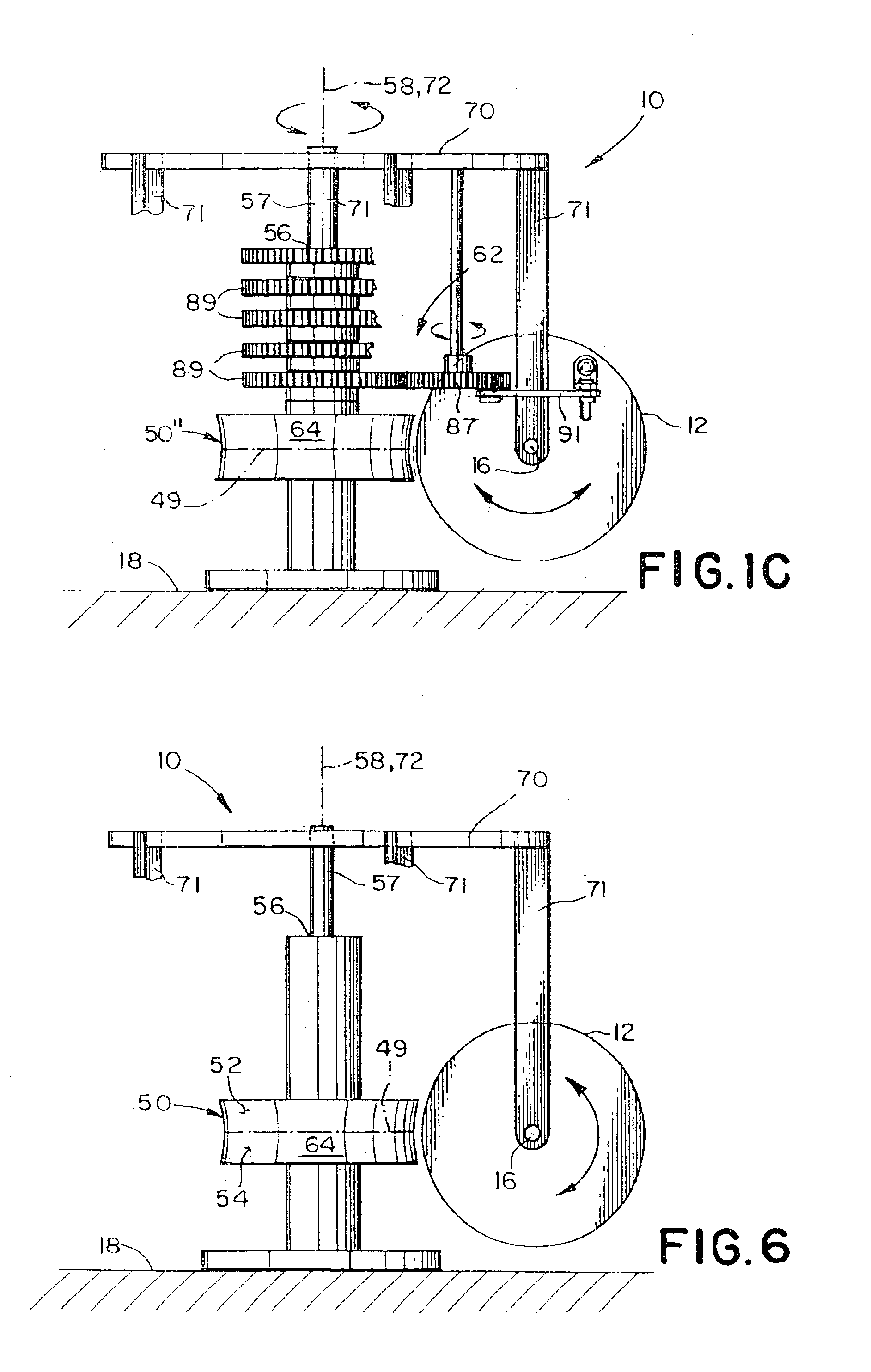Permanent magnet motor
a permanent magnet, magnet motor technology, applied in the direction of dynamo-electric brake control, mechanical energy handling, propulsion system, etc., can solve the problem that magnet motors still require external power sources
- Summary
- Abstract
- Description
- Claims
- Application Information
AI Technical Summary
Benefits of technology
Problems solved by technology
Method used
Image
Examples
first embodiment
Referring now to FIGS. 1A, 2 and 3 there is shown a first preferred embodiment of a motor 10 using the rotor 12 and providing unidirectional rotational motive power. The first preferred embodiment comprises a generally circular stator 50 having a stator axis 72 and a circumferential surface 64 mounted to a base 18; an armature 70, having an armature axis of rotation 58 coincident with the stator axis 72, attached to the stator 50 by an armature axle 57 for rotation about the armature axis of rotation 58; and five rotors 12 (only one of which is shown for clarity), the rotors 12 being spaced at intervals of about 72 degrees around the armature 70. Each rotor 12 is spaced from the armature by an armature strut 71 and attached to the armature strut 71 by an axle, for rotation about an axis 16 of the rotor 12 in a plane generally aligned with the armature axis of rotation 58. The motor 10 further includes a linkage assembly 53 drivingly connecting each rotor 12 and the stator 50 togethe...
fourth embodiment
Referring now to FIG. 7A, each rotor 12 comprises a first U-shaped magnet 20 generating a second magnetic field. The first U-shaped magnet 20 is positioned on the rotor 12 such that the north pole and the south pole of the first U-shaped magnet 20 faces toward the axis 16 of the rotor 12, and the rear side 26 of the first U-shaped magnet 20 faces the periphery of the rotor 12. When the rear 26 of the first U-shaped magnet 20 is adjacent to the north pole of one of the first stator magnets 40 along the line of demarcation 49, a portion of the second magnetic field directly adjacent to the rear 26 of the first U-shaped magnet 20 interacts with a portion of the first magnetic field generated by the north pole of the first stator magnet 40 to cause the rotor 12 to rotate in a counterclockwise direction. As the rotor 12 rotates in the counterclockwise direction, a portion of the second magnetic field associated with the south pole of the first U-shaped magnet 20 interacts with a portion ...
fifth embodiment
Referring now to FIGS. 6 and 8C-8D there is shown a sixth preferred embodiment of the motor 10. The structure and operation of the sixth preferred embodiment is identical to that of the fifth preferred embodiment except that: (1) the stator magnets 40′, 42′ on the surface 64 of the stator 51′ are in a slightly different orientation; (2) an additional stator magnet 41 is added to each pair of stator magnets 46 and (3) the U-shaped magnets 22, 24 attached to each rotor 12 are replaced with bar magnets 36, 38: Specifically, and referring now to FIG. 8C, the direction of magnetization of each first stator magnet 40′ and each second stator magnet 42′ is aligned to be generally perpendicular to the line of demarcation 49 instead of being inclined in the pre-determined direction around the armature axis of rotation 58 as in the Also, the stator 51′ also includes a third stator magnet 41 mounted on the outer surface 64 along the line of demarcation 49 midway between each first stator magne...
PUM
 Login to View More
Login to View More Abstract
Description
Claims
Application Information
 Login to View More
Login to View More - R&D
- Intellectual Property
- Life Sciences
- Materials
- Tech Scout
- Unparalleled Data Quality
- Higher Quality Content
- 60% Fewer Hallucinations
Browse by: Latest US Patents, China's latest patents, Technical Efficacy Thesaurus, Application Domain, Technology Topic, Popular Technical Reports.
© 2025 PatSnap. All rights reserved.Legal|Privacy policy|Modern Slavery Act Transparency Statement|Sitemap|About US| Contact US: help@patsnap.com



